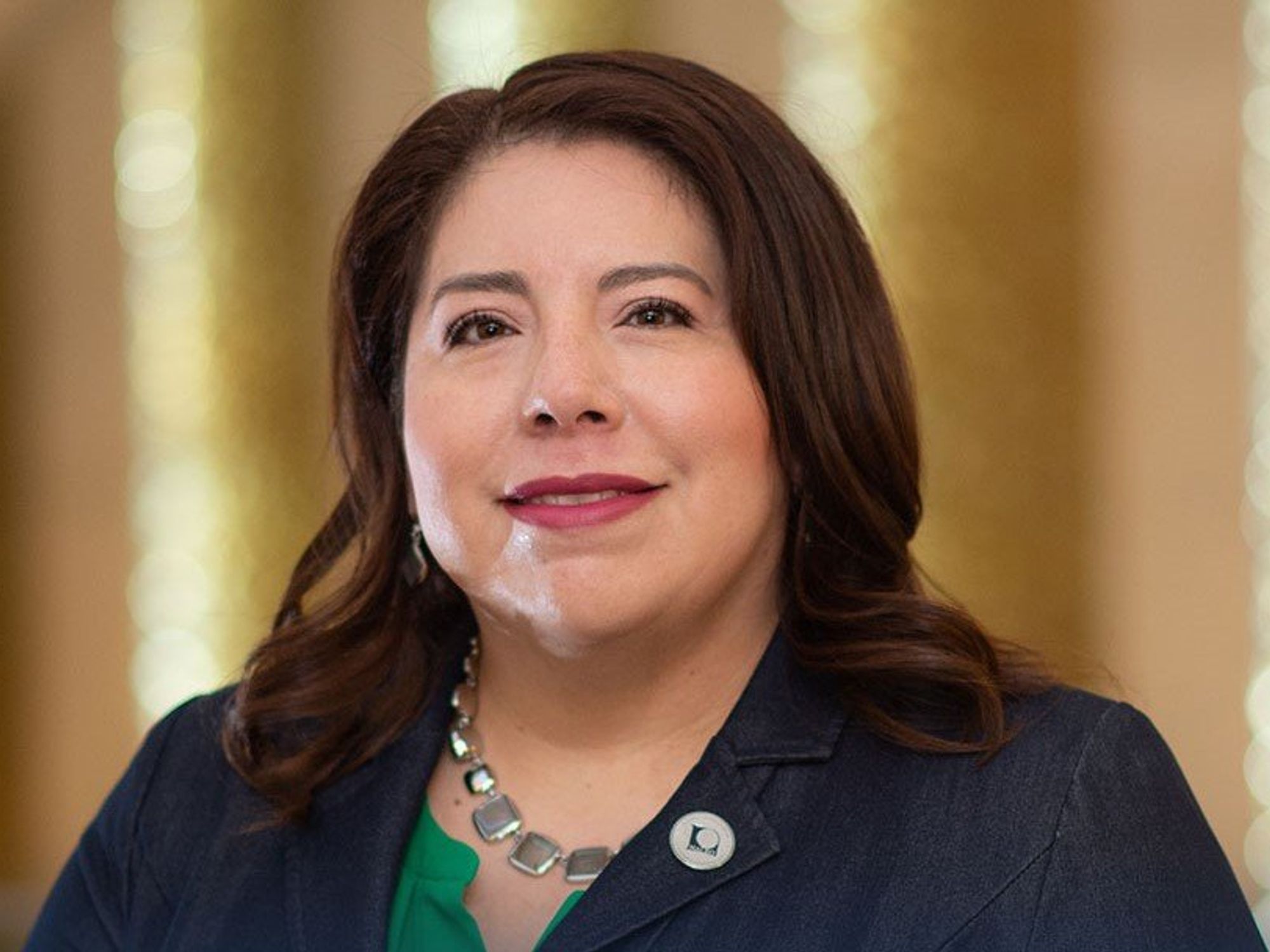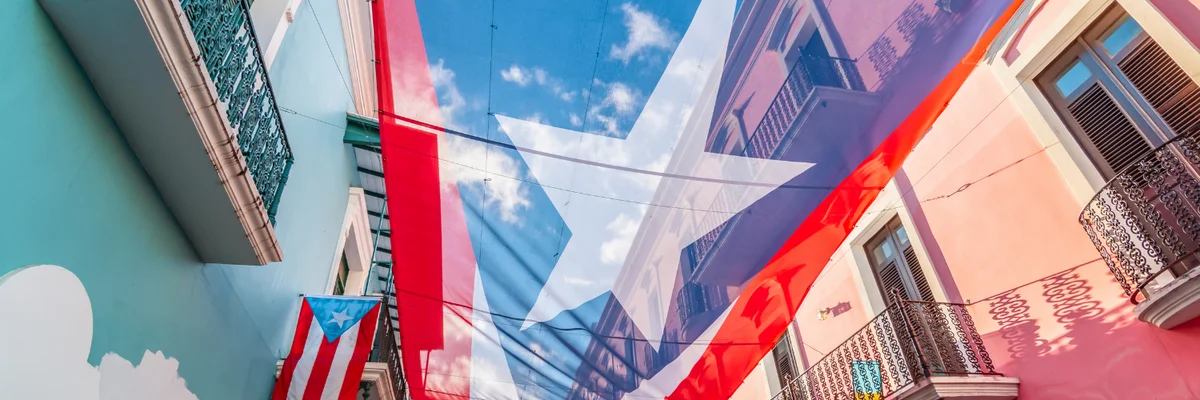In The Community
Every March 22, Puerto Rico commemorates Emancipation Day, a historical milestone that marks the abolition of slavery on the island. Meanwhile, the topic of statehood continues to be rooted in a desire to separate the country from its colonial past and achieve self-determination. As the island navigates its future, its fight for statehood is inextricably connected to this moment in Puerto Rican history.
The Story Behind Puerto Rico’s Emancipation Day
Emancipation Day in Puerto Rico commemorates the abolition of slavery, a pivotal moment in the island's history, and marks the end of a complex and gradual process initiated by the Spanish government. The Moret Law, enacted in 1870, was a significant precursor to Emancipation Day as it aimed to gradually abolish slavery by freeing children born to enslaved mothers after September 17, 1868. It was the Spanish Cortes' approval of the law on March 22, 1873, that officially ended slavery in Puerto Rico, freeing approximately 29,000 slaves.
The abolition of slavery in Puerto Rico wasn’t a straightforward process. It was influenced by various factors, including the growing anti-slavery movement in Spain and the increasing liberalism among the island's agricultural elite. Additionally, slave revolts and escapes helped weaken the institution of slavery over time. The Grito de Lares, a major uprising in 1868, also accelerated the push for abolition by highlighting the need for social change and independence from Spain. Despite these efforts, the abolition process was complicated by the need to compensate slave owners and ensure a smooth transition to free labor.
The law passed on March 22 required former slaves to work for their former masters for three more years as a form of compensation for the loss of their labor. Additionally, slave owners were financially compensated by the Spanish government for their "property," a common practice in many regions where slavery was abolished. This conditional freedom meant that the transition from slavery to freedom took time, with former slaves facing significant economic and social challenges.
The conditional nature of emancipation, where former slaves had to still earn their freedom, is an aspect of Puerto Rico's history that’s often overlooked, and efforts are being made to revisit and understand the experiences of emancipated Black Puerto Ricans, whose stories have been largely silenced by colonial narratives.
Emancipation vs. Statehood: Understanding the Difference
Statehood is the process by which Puerto Rico would become the 51st state of the United States. This would integrate Puerto Rico into the U.S. political system, allowing its residents to participate fully in federal elections and governance. On the other hand, emancipation refers to freeing Puerto Rico from its colonial status, a concept that encompasses the nation’s broader desire for self-determination and political equality.
Emancipation can be achieved through different means, including statehood, independence, or free association with the U.S. Statehood would end Puerto Rico's territorial status and provide full political rights and representation within the U.S. However, not everyone views statehood as true emancipation. Some argue that independence or free association would better achieve this goal by allowing Puerto Rico to govern itself more autonomously.
While statehood is a specific path toward political equality and could be considered a form of emancipation, the two terms aren’t interchangeable. Emancipation is a broader concept that encompasses the desire for self-determination and political freedom, which can be achieved through various means, including but not limited to statehood.
The fight for statehood is deeply tied to the concept of emancipation from colonial status. Many Puerto Ricans view their current status as a form of colonialism, where they lack full political rights despite being U.S. citizens. In an opinion piece for The Latino Newsletter, Susanne Ramirez de Arellano, former News Director for Univision Puerto Rico and conflict correspondent, current cultural critic, and writer, stated: “Let's be blunt. Puerto Rico is a United States colony. Call it an ‘unincorporated territory’ if it makes you feel better. Congress holds the ultimate power over the archipelago and its people. Congress decides whether the island keeps its self-government, becomes a state or independent, or enters a free association with the U.S.”
Statehood is seen by many Puerto Ricans as a way to achieve full political equality and end this colonial legacy. However, some argue that true emancipation can only be achieved through independence, allowing Puerto Rico to govern itself entirely.
Puerto Rico’s Ongoing Quest for Statehood
Puerto Rico has been engaged in a quest for statehood for decades, but the journey has gained momentum in recent years. In November 2024, Puerto Ricans participated in a binding referendum, where they voted on their political status, with options including statehood, independence, or a "free association" with the United States. The results showed a strong preference for statehood, with 58.6% of voters supporting this option, followed by 29.6% for free association, and 11.8% for independence. This outcome marked a significant shift, as previous non-binding referendums had seen mixed results, but the latest vote was notable for its clarity and the high turnout of 63.58%.
Statehood proponents argue that:
- It would provide full representation in Congress and allow Puerto Ricans to vote in presidential elections.
- The island would receive up to $10 billion in additional federal funds annually, supporting healthcare, education, and infrastructure.
- It would eliminate the status of Puerto Ricans as second-class citizens, despite holding U.S. citizenship since 1917.
However, opponents highlight concerns and challenges such as:
- Puerto Rico’s economic burden due to its high debt, which some fear could deter Congress from granting statehood.
- Loss of local autonomy, as Puerto Rico would be subject to federal laws and regulations that may not always align with its needs.
- Cultural preservation, including the role of Spanish as an official language and the island’s unique traditions, though this is not necessarily a direct consequence of statehood. Puerto Rico could maintain its bilingual identity much like in Quebec, Canada, where French is an official language alongside English.
The push for statehood has been bolstered by recent events, including the celebration of the 108th anniversary of U.S. citizenship for Puerto Ricans. Advocates have been urging Congress to act on the referendum results, emphasizing that statehood is the only option that would provide permanent equal rights and duties for the island's residents. Despite these efforts, the path to statehood remains uncertain, as any legislation must navigate the complexities of the U.S. political landscape. The U.S. Senate, in particular, poses a challenge, as it requires a significant majority to pass any statehood bill. Nonetheless, the momentum behind statehood continues to grow, with both local leaders and U.S. organizations advocating for this change.
The Future of Puerto Rico
Puerto Rico’s Emancipation Day and the fight for statehood are deeply intertwined in the island’s broader struggle for self-determination and equality. While the abolition of slavery in 1873 marked a critical step toward freedom, Puerto Rico’s political future remains uncertain.
The recent referendum on statehood has reignited debates on how Puerto Rico can best achieve true emancipation—whether through full integration into the U.S. or complete sovereignty. Regardless of the outcome, the island’s fight for representation, equity, and cultural preservation continues to shape its path forward.
As Puerto Ricans celebrate Emancipation Day, they do so with the knowledge that their pursuit of freedom is far from over.
In a landmark move for Latino political representation, the National Association of Latino Elected and Appointed Officials (NALEO) and NALEO Educational Fund has named Erica Bernal-Martinez as its new Chief Executive Officer. NALEO is a non-partisan membership organization with a mission to bring together Latino officials from diverse backgrounds and political affiliations to foster collaboration and unity in addressing critical policy issues. The NALEO Educational Fund is the organization's 501(c)(3) arm, with a focus on empowering Latinos to participate fully in the American political process, from citizenship to public service.
Bernal-Martinez, a first-generation Latina who has spent 25 years leading operations for the NALEO Educational Fund, steps into this historic role, making her the first Latina woman to lead NALEO, following Arturo Vargas’ long-standing role as CEO.

In a NALEO press release announcing Bernal-Martinez’s appointment, Vargas expressed his support, saying: “I have had the pleasure of working with Erica throughout her career with NALEO Educational Fund and take immense joy in the fact that our Board has entrusted her with the role of the next CEO. Having worn virtually every leadership hat within this organization during her exemplary tenure, I can think of no other person more uniquely qualified and better prepared to take on the responsibility of leading our mission forward.”
While the exact percentage of Latino political organizations led by Latina women in the U.S. is difficult to calculate due to a lack of comprehensive data, only a handful of them exist despite 36.2 million Latinos being of voting age as of 2024, and approximately 1.4 million additional Latinos expected to become eligible to vote every year. Additionally, many of the organizations exist as political action committees, more commonly known as PACs, rather than membership organizations like NALEO.
Bernal-Martinez’s appointment marks a significant moment for Latino political leadership, where Latina women remain underrepresented in top political positions relative to the size of the population. However, improvement is occurring. The number of elected Latinas in the House of Representatives is increasing, contributing significantly to the growth in women representatives overall. Between the 115th and 118th Congresses, the share of women among Latino representatives rose from 26% to 37% between 2017 and 2025 according to the latest available data.
NALEO: The Largest Organization of Latino Political Leaders
Established in 1976, NALEO stands as the largest non-partisan organization of Latino elected and appointed officials in the United States, representing over 7,000 policymakers across various levels of government. As a non-partisan entity, the organization brings together officials from different political affiliations to address pressing issues affecting Latinos nationwide. Given the small number of political membership organizations that work primarily with Latino elected officials, NALEO is filling a critical void in a space where thousands of policy makers don’t have very many places to go.
Under Bernal-Martinez’s leadership, NALEO is set to embark on a new era, continuing its commitment to fostering Latino political participation and ensuring equitable representation in American democracy. Her extensive experience in constituency services, civic engagement, and voter mobilization positions her as someone who could be a transformative leader for the organization’s future.
In the NALEO press release, Bernal-Martinez expressed her commitment to the work ahead, stating: “When I started my career, I never imagined that my work with this organization would have allowed me to have so many fulfilling and impactful experiences over my 25-year tenure. From leading efforts to bring Republicans and Democrats from across the country together to move policy issues forward, to guiding our citizenship and voter mobilization initiatives, I have seen firsthand the ability of NALEO and NALEO Educational Fund to make a difference in people’s lives.”
She concluded, “My work has always been motivated by a devotion to family, community, and country. I see this same dedication from our NALEO Members and the incredibly committed staff at NALEO Educational Fund, and I am honored to lead them as we embark on this next chapter in our organizations’ future.”
A Vision for the Future
Bernal-Martinez’s leadership comes at a pivotal time for Latino political engagement. With ongoing debates over voting rights, immigration policy, and Latino representation in government, her tenure as CEO will be closely watched. Her priorities will include organizational restructuring, enhancing long-term strategic planning to continue serving the Latino community, and implementing strategies for programmatic impact and efficiency.
NALEO’s announcement of Bernal-Martinez as CEO is both a pivotal leadership change and a defining moment for Latina women in leadership. As Latinas continue to face systemic barriers to political advancement, her appointment sends a clear message: Latina leaders are helping shape the future of American politics.
- Empowering Latinas: 5 Leaders Transforming Communities ›
- Latina Success Is American Success: Inside the Game-Changing LDC Initiative ›
Since returning to the White House, Donald Trump has signed a flurry of executive orders aimed at reshaping the government, economy, and key policies. Whether it’s expanding Elon Musk’s role in streamlining government spending or reversing Biden-era climate commitments, each order carries significant implications. Let’s break down exactly what some of these executive actions mean:
Reopening Guantánamo Bay for Migrant Detentions
 Photo by Metin Ozer on Unsplash
Photo by Metin Ozer on UnsplashTrump has signed an order preparing Guantánamo Bay to hold up to 30,000 immigrants facing deportation. This is a stark escalation of his immigration policies, raising major human rights concerns, such as detainee lack of access to communication and legal representation, inhumane conditions, inadequate medical care and education for children, and concerns about indefinite detentions without due process.
Declaring a National Border Emergency

David Peinado Romero - Shutterstock
Trump has declared a national emergency at the southern border, paving the way for a large-scale deportation program. The proclamation, known as Proclamation 10886, cites threats from "cartels, criminal gangs, known terrorists, human traffickers, smugglers, unvetted military-age males from foreign adversaries, and illicit narcotics." The order effectively ends asylum protections at the southern border, with Border Patrol agents now turning away migrants regardless of protection needs.
Gender Identity Policies
 Photo by Katie Rainbow 🏳️🌈 on Unsplash
Photo by Katie Rainbow 🏳️🌈 on UnsplashThe administration has issued executive actions eliminating DEI mandates at the federal level and has stated that the U.S. government will recognize only two genders: male and female. This policy affects the rights and recognition of transgender and non-binary individuals, leading to challenges in accessing appropriate identification documents and healthcare services. Advocates argue that these measures undermine the dignity and rights of LGBTQ+ communities.
Expanding Elon Musk’s ‘Department of Government Efficiency’
 Photo by Andy Feliciotti on Unsplash
Photo by Andy Feliciotti on UnsplashTrump has doubled down on his commitment to reducing the federal workforce, handing Elon Musk more control over government efficiency efforts. The order mandates a transformation in federal spending, requiring a centralized payment system for contracts, grants, and loans, all under Musk’s watch. The White House argues this will enhance transparency and accountability, but critics see it as a step toward dismantling key federal programs and outsourcing government operations to private entities.
Attempting to Impose Healthcare Price Transparency
 Photo by National Cancer Institute on Unsplash
Photo by National Cancer Institute on UnsplashTrump has revived his push to force hospitals to publicly disclose prices for common procedures, a policy he attempted in 2019 that faced stiff opposition from insurers and hospital executives. While the idea sounds great for consumers, many healthcare providers have historically refused to comply, arguing that pricing structures are too complex for simple transparency measures. Whether this version of the policy will stick remains to be seen.
Reviewing Regulations at All Agencies
 Photo by Viktor Talashuk on Unsplash
Photo by Viktor Talashuk on UnsplashIn another sweeping move, Trump has ordered every federal agency to conduct a regulatory review with the help of Musk’s team. The goal is to eliminate rules that are deemed inconsistent with the administration’s policies. This could lead to significant rollbacks in environmental protections, financial regulations, and labor laws, depending on which regulations are targeted.
Making Independent Regulators Answerable to the White House
 Photo by David Everett Strickler on Unsplash
Photo by David Everett Strickler on UnsplashTrump has signed an order requiring independent regulatory agencies—like the Securities and Exchange Commission (SEC) and the Federal Trade Commission (FTC)—to report directly to the White House. This move effectively brings agencies that were designed to function separately under presidential oversight, which raises concerns about political interference in financial markets and consumer protection policies.
25% Tariffs on Foreign Steel and Aluminum
 Photo by the blowup on Unsplash
Photo by the blowup on UnsplashTrump is ramping up his protectionist trade policies by imposing a 25% tariff on foreign steel and aluminum. The administration argues this will protect American manufacturing and reduce reliance on foreign supply chains. However, industries that rely on imported materials—like construction and automotive manufacturing—could see costs rise, potentially passing those expenses onto consumers.
Banning Trans Athletes from Women’s Sports
 Photo by Jonathan Chng on Unsplash
Photo by Jonathan Chng on UnsplashTrump has directed federal agencies to interpret Title IX as banning transgender women from participating in women’s sports. This aligns with previous Republican-led efforts at the state level and is likely to face legal challenges. Supporters argue this protects competitive fairness, while opponents say it discriminates against transgender athletes. The order is likely to face legal challenges, as similar state-level laws have often been contested in federal courts.
Reshaping the Military
 Photo by Diego González on Unsplash
Photo by Diego González on UnsplashTrump’s executive orders targeting the military include rolling back diversity and inclusion efforts, banning transgender individuals from serving, and reinstating soldiers discharged for refusing the COVID-19 vaccine. These actions mark a return to policies from his first term and a significant cultural shift within the armed forces.
- Congress Passes Laken Riley Act, Moving Immigration Policy Towards Hardline Punishment ›
- Executive Orders Explained: Untangling the Web of Immigration Chaos ›




